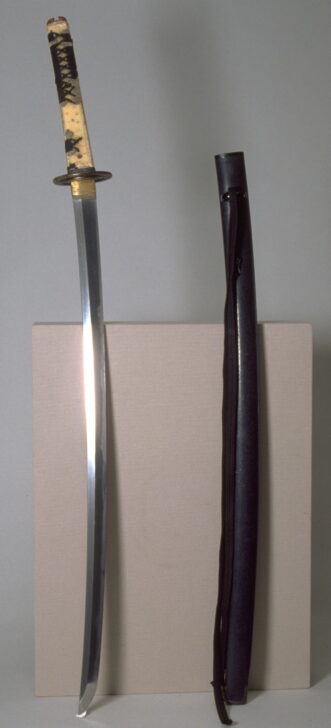Sword (original) and later handle, sword guard, and scabbard
Ietsugu

Description
Since ancient times, generations of Japanese swordsmiths went to great lengths to determine which techniques, materials, and methods would produce swords that were strong and precise. The result was the Japanese sword, highly prized both as a weapon and as an example of fine art. Produced during the early Muromachi period, when the shogun, the imperial court, and warlords were engaged in intense battles for power, this sword is shorter and slimmer than previous models, allowing for a quicker response on the battlefield.
Japanese swords are constructed in two layers, a soft iron core and a hardened steel edge. After the two layers are combined, the cutting edge is progressively hardened by alternately heating and cooling the metal, while the opposite edge is covered with clay to keep it blunt.
(Label for UMMA Japanese Gallery Opening Rotation, March 2009)
Subject Matter:
Long swords (tachi) were the most important belongings for samurai, almost as equal to their lives; as many tragic stories attest, samurai could commit suicide when his sword was taken, stolen, or lost.
Physical Description:
The sword is long and slightly curved; the handle cover is wrapped with black cords, mostly worn out. The round tsuba (sword guard) is made of steel and has two holes. The scabbard is painted with lacquer and has a string for hanging. There is a pair of lion-shaped menuki (fitting) on the handle.
Usage Rights:
If you are interested in using an image for a publication, please visit https://umma.umich.edu/request-image/ for more information and to fill out the online Image Rights and Reproductions Request Form.